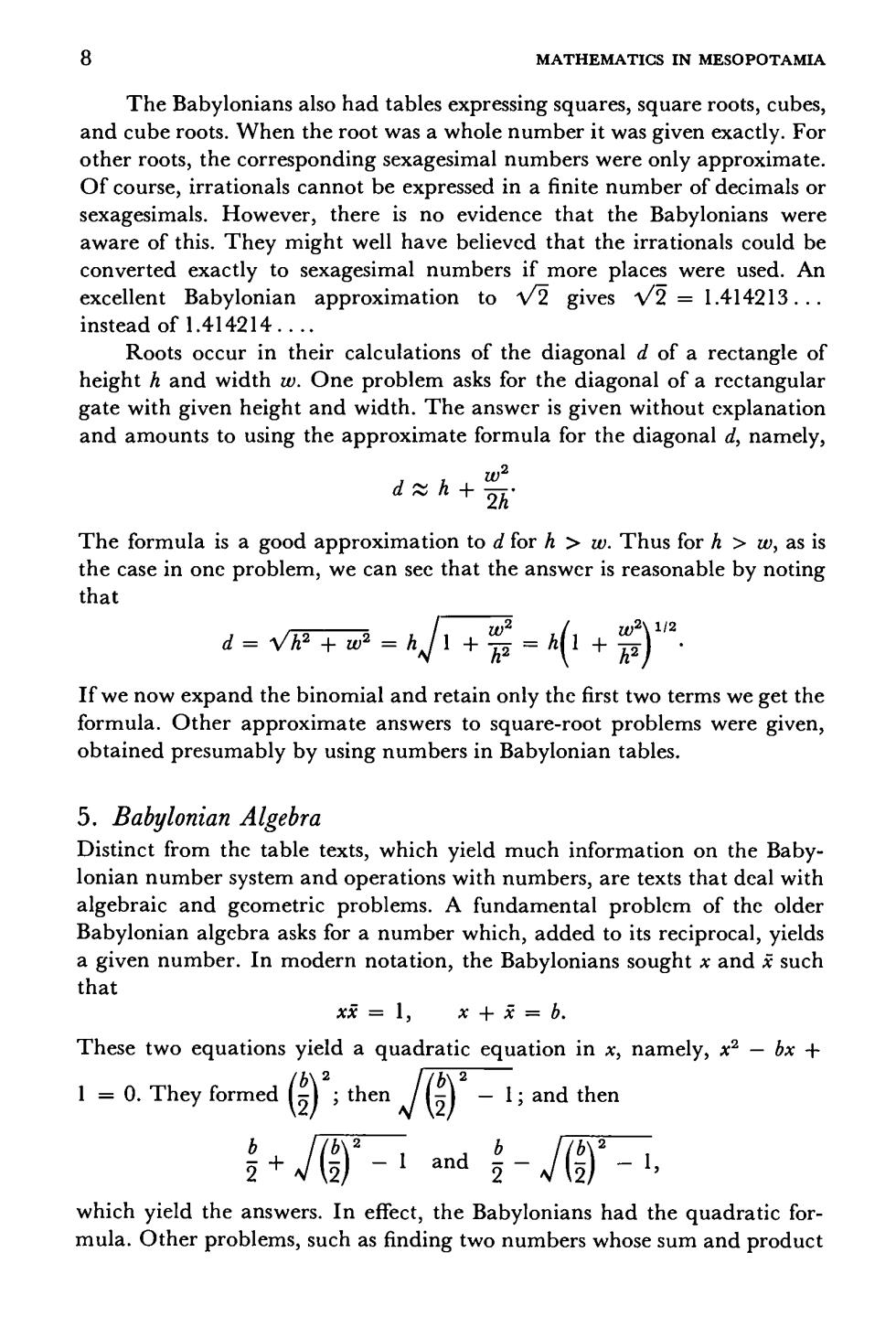正在加载图片...

8 MATHEMATICS IN MESOPOTAMIA The Babylonians also had tables expressing squares,square roots,cubes, and cube roots.When the root was a whole number it was given exactly.For other roots,the corresponding sexagesimal numbers were only approximate. Of course,irrationals cannot be expressed in a finite number of decimals or sexagesimals.However,there is no evidence that the Babylonians were aware of this.They might well have believed that the irrationals could be converted exactly to sexagesimal numbers if more places were used.An excellent Babylonian approximation to v2 gives v2 =1.414213. instead of 1.414214. Roots occur in their calculations of the diagonal d of a rectangle of height h and width w.One problem asks for the diagonal of a rectangular gate with given height and width.The answer is given without explanation and amounts to using the approximate formula for the diagonal d,namely, d≈h+ 2h The formula is a good approximation to d for h>w.Thus for h>w,as is the case in one problem,we can sec that the answer is reasonable by noting that =V+=1+=+ 2 If we now expand the binomial and retain only the first two terms we get the formula.Other approximate answers to square-root problems were given, obtained presumably by using numbers in Babylonian tables. 5.Babylonian Algebra Distinct from the table texts,which yield much information on the Baby- lonian number system and operations with numbers,are texts that deal with algebraic and gcometric problems.A fundamental problem of the older Babylonian algebra asks for a number which,added to its reciprocal,yields a given number.In modern notation,the Babylonians sought x and such that Xx=1, x+元=b. These two equations yield a quadratic equation in namely,x 1 =0.They formed ;then -I;and then +份-1ad-份-, which yield the answers.In effect,the Babylonians had the quadratic for- mula.Other problems,such as finding two numbers whose sum and product